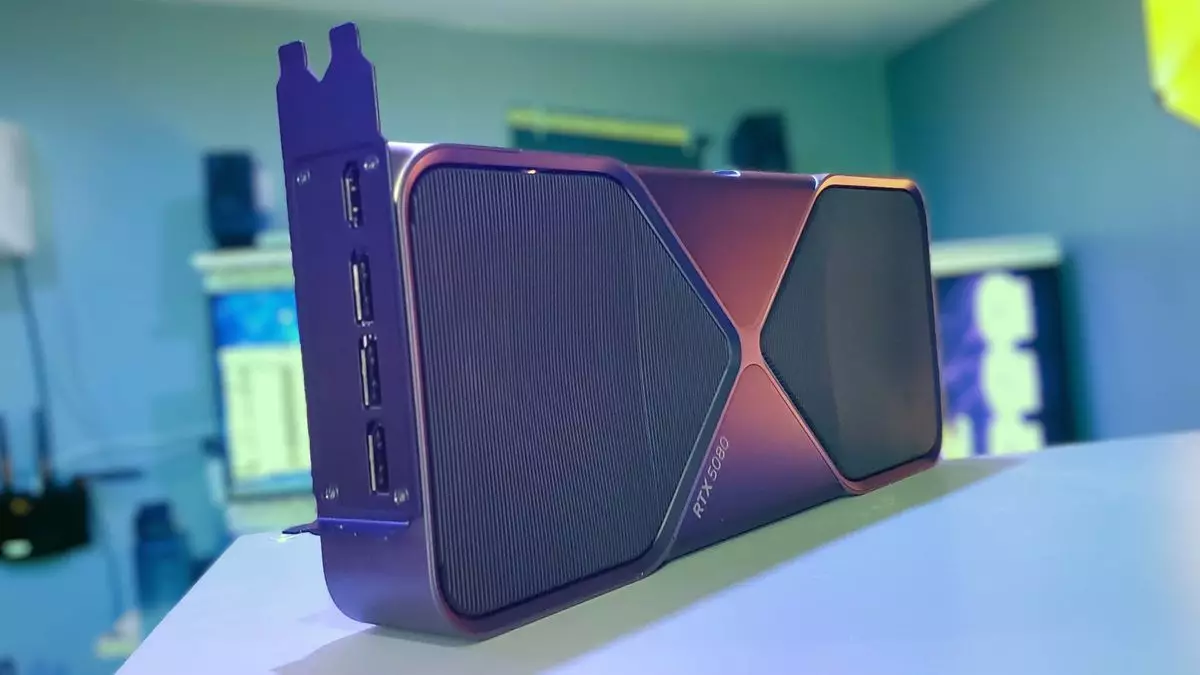The recent rollout of Nvidia’s RTX 50-series graphics cards has generated an intriguing mix of excitement and skepticism within the gaming community. With diverse reactions ranging from admiration to disappointment, discussions surrounding these GPUs reflect the complexities of consumer anticipation versus reality. It’s essential to take a step back and analyze the various components that have shaped the RTX 50-series launch, the demand patterns observed, and their implications for the gaming hardware market.
The Nvidia RTX 50-series has been hailed as the “most powerful graphics core” available for gaming PCs in some quarters. However, this grand proclamation contrasts starkly with the sentiments of users who describe the launch as “strangely unexciting” and even “a paper launch.” This split in perception highlights the challenge Nvidia faces: delivering groundbreaking technology in an environment where consumers have become discerning and, in some cases, cynical of marketing claims.
The disparity in reactions underscores the overarching narrative within the gaming hardware community. Enthusiasts had anticipations grounded in Nvidia’s stellar history of performance upgrades with each generation. Thus, while some consumers rushed to declare their loyalty, others remained reticent, questioning the real-world implications of the RTX 50-series on their gaming experiences. Such disparities can ultimately influence brand reputation and long-term consumer trust.
Despite the mixed reviews, the figures from major retailers like Newegg provide a more definitive measure of the RTX 50-series’ success. Newegg reported that its limited allotment of graphics cards sold out “in record time,” with a staggering amount of inventory being claimed within the first five minutes of launch. Although the pacing of sales is promising, it’s necessary to approach these figures with caution. The lack of transparency regarding stock levels compared to previous launches creates a murky picture for consumers and analysts alike.
Supporting this perspective, social media chatter and reports from various retail sites across the US and UK confirmed a similar trend: stock depletion within an exceptionally short time span. Retailers, while celebrating brisk sales, must remain vigilant in their strategies to manage supply constraints and avoid the pitfalls associated with stock shortages that plagued the previous generation of graphics cards.
An interesting aspect of the RTX 50-series launch is the simultaneous demand for prebuilt gaming PCs with Nvidia’s latest GPUs. Retailers like Newegg offered a range of prebuilt systems, amplifying overall interest and engagement. This phenomenon suggests that consumers are increasingly leaning towards convenience and packaged solutions, rather than assembling high-end gaming rigs themselves. As companies like ABS, iBuyPower, and Skytech provide comprehensive packages that include the latest GPUs, it is clear that prebuilt systems are making a significant impact on the market dynamics.
The dual offering of standalone graphics cards and prebuilt systems also contributed to the elongated sell-out time, with demand for the latter holding up stock for the former. This intersection of graphics cards and prebuilt PCs encapsulates broader trends in consumer behavior, showing a potential shift in how gamers equip themselves for immersive experiences.
Despite the current frenzy, questions linger about the future restocks. Nvidia and its add-in board partners must ensure that they not only meet existing demand but also bolster consumer confidence through consistent availability. Newegg’s announcement of a second round of inventory shortly after the launch indicates that retailers are agile, but the question remains whether this flexibility can keep pace with exhilarating interest from the gaming community.
Emerging from this launch narrative is a critical lesson regarding the engagement of tech-forward consumers. As Jim Tseng, Newegg’s VP of product management, suggests, enthusiasm for high-end technology remains robust. However, it’s essential for Nvidia and its partners to heed consumer sentiments moving forward. Listening to feedback and adjusting marketing strategies could cultivate a stronger connection with their customer base, thus ensuring long-term loyalty in a rapidly evolving landscape.
The RTX 50-series launch has undoubtedly garnered significant attention—both positive and negative. As the dust settles, the ultimate measure of success will lie not merely in sales figures but in the ongoing satisfaction of consumers who invest in these high-performance products. The gaming hardware market remains dynamic, and the next steps taken by Nvidia could either reinforce their leading position or challenge their status in an ever-competitive field.

